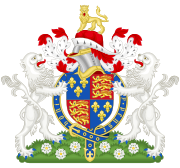| Taltarum's Case | |
|---|---|
 | |
| Court | Court of Common Pleas |
| Decided | Easter Term 1465 and Michaelmas Term 1472 |
| Citation | Y. B. 12 Edw. IV. 19-21 |
| Court membership | |
| Judges sitting | Sir Richard Choke, Sir Thomas Bryan, Sir Thomas de Littleton, Richard Neele |
| Keywords | |
| entailed estates (fee tail); common recovery; barring the entail (conversion to normal estate of fee simple) | |
Taltarum's Case is the name given to an English legal case heard in the Court of Common Pleas, with decisions being handed down in 1465 and 1472. The case was long thought to have established the operation of the common recovery, a collusive legal procedure that was, until finally abolished in 1833, an important element of English law of real property. By means of a complex legal fiction, a recovery converted a freehold or copyhold property held in fee tail, which could not be freely sold or disposed of, into an estate in fee simple, which could be disposed without restriction.
Although the principles of the common recovery had existed before 1472, the extensive discussion of these principles by the judges in Taltarum's Case meant that in succeeding centuries the common recovery's procedures, and even the names of some of the fictitious individuals involved in them, were modelled on the case.
Although traditionally known as Taltarum's Case, this name was in fact a misspelling: it was originally entered in the Plea Rolls as "Talcarn's Case". The name of the individual referred to, one Thomas Talcarn of Godcote in Cornwall, was spelt Talcarn, Talcarum, or Talkarum, in the original documents, though never in the form "Taltarum" under which the case became famous.[1][2] The case would be referred to as Hunt v Smyth if modern naming conventions were followed.[3]
- ^ Fisher, H. A. L. (ed). The Collected Papers of Frederic William Maitland, Vol 2, Cambridge UP, 1911, p.310
- ^ Baker and Milsom Sources of English Legal History: Private Law to 1750, OUP, 2010, p.68
- ^ Megarry, R. The Law of Real Property, Sweet & Maxwell, 2012, p.72